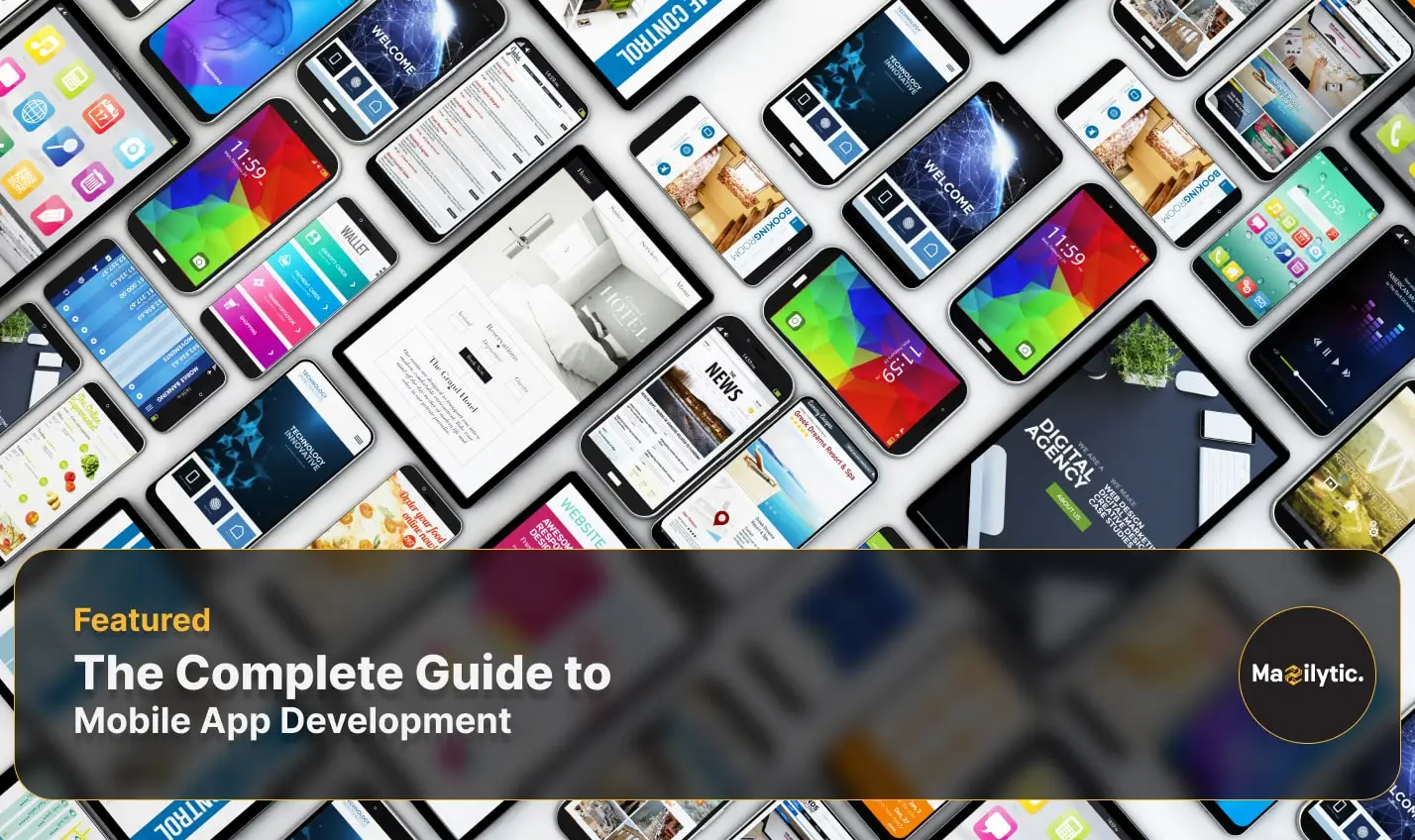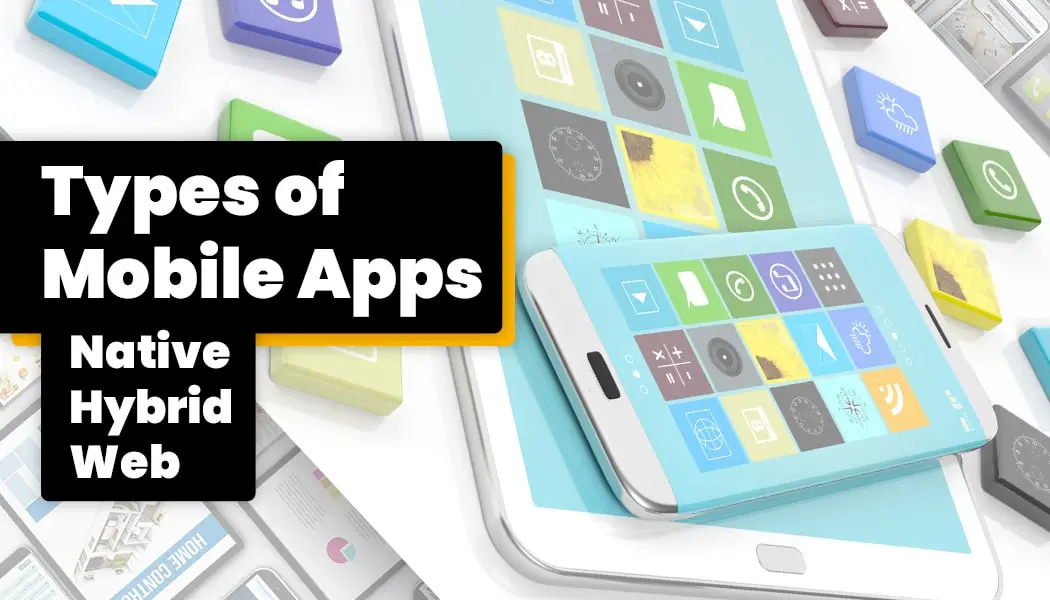
The Complete Guide to Mobile App Development
Globalization and the advancement of technology has resulted in increased usage and dependency on smartphones. Smartphones have thus become so integrated into our lives that they can be said to be an appendage of the user, people are addicted to these devices for every aspect of life, from communication, leisure, business, purchasing, and even money transactions. This has led to a surge in demand for mobile applications, making the development of a mobile app a thriving field.
What is Mobile App Development?
Mobile application development refers to the process of building apps through the use of software tools for one or multiple mobile operating systems. They can be native – developed specifically for one or another platform, like iOS or Android – or hybrid, which uses web technologies integrated with native ones; or progressive web apps (PWAs) – web apps designed to mimic the functionality of an app, but accessed through a browser as opposed to an icon on an app dashboard.
Why Develop a Mobile App?
Being a popular tool for promoting businesses, mobile applications can be developed for many reasons at various stages of business and personal life. Here are some key benefits:
- Increased Reach and Engagement: Mobile apps are useful for having an uncomplicated and effective way of accessing the users and getting their attention. Notifications and in-app elements can strengthen user engagement and guarantee multiple usages.
- Improved User Experience: Mobile applications can be the better concept from the perspective of convenience and usability compared to mobile sites. Additional features such as location tracking, as well as the ability to work in an offline mode also contribute to making the application more effective.
- Enhanced Brand Awareness: An effective app design can help you leverage your brand, keeping your company’s name in front of potential customers.
- Data Collection and Insights: Apps can help you gather useful user data and receive information about their behavior and preferences. One may use this information to improve applications, boost marketing strategies, and make wise business decisions.
- Monetization Opportunities: Apps can make money and boost revenue through various models like in-app purchases, subscriptions, advertising, or freemium models with paid upgrades.
How to Build a Mobile Application?

A successful mobile app development demands meticulous planning, execution, and rigorous maintenance. Here’s a breakdown of the key stages involved:
- Ideation and Strategy:
- Identify a problem or need: How will your app fill a void in the market? What benefit is it going to give to users?
- Target audience: Which category of users are you targeting with this app? It is important to know who your target audience is and what their needs are.
- Competitor research: On this stage it is important to evaluate similar applications you are going to enter the market with. What can be regarded as their advantages and disadvantages? How will your app stand out from the competition?
- App concept and features: Specify what your application does best and what it can offer that will help you meet the mentioned need.
- Types of Mobile Apps:
- Native Apps: Developed natively to be used with only one operating system – iOS or Android, written in respective languages – Swift or Objective-C for the iOS App and Java or Kotlin for the Android app. Native applications provide the best optimization and user interface, as well as access to instrumentation.
- Hybrid Apps: Integrated Web Technologies (HTML5, CSS, JavaScript) are combined with native application frameworks to develop native applications for multiple platforms. It can be used to reduce development time but may have drawbacks such as the limit in performance and access to native functions.
Native vs. Hybrid Apps: Deciding between native and hybrid apps hinges on your app’s complexity and goals. Native apps, built for one platform (iOS or Android), offer superior performance and access to all device features but come at a higher development cost. Hybrid apps, using a single codebase for both platforms, are more cost-effective but may have limitations in performance and functionality. Consider your budget, target audience, and app’s needs to choose the right path for your mobile application.
- Progressive Web Apps (PWAs): Engages the use of web technologies to create an application-like feel in the application accessible through a browser. PWAs are usable offline, can be added as apps on the home screen, and provide push notifications.
- Mobile App Development Tools: The choice of development tools depends on the type of app you’re building. Here are some popular options for both Native and Hybrid Development:
- Native Development: Xcode (iOS), Android Studio (Android), Kotlin
- Hybrid Development: React Native, Flutter, Ionic PWAs are built using standard web development tools (HTML, CSS, JavaScript).
- Mobile App UI/UX Design:
- User Interface (UI): Being responsible for the interfaces of the application, this factor concerns the layout, icons, and appearance of the application. The UI should be intuitive, easy to use, and look good.
- User Experience (UX): Considers all touchpoints a user experiences while using the application. Ideally, it should be seamless, reliable and provides the user with the information that they require. Integrate usability testing during the design process.
- Mobile App Prototyping: Full development can be costly, especially if the idea does not work as expected, and that is why designing a prototype is important as it enables you to design and plan the various features of your app before putting your money into it. In this phase of mobile app prototyping, tools such as Figma, InVision, and Adobe XD can come in handy.
- Mobile App Development: This stage requires writing the necessary code and coding the API interfaces (if necessary) that are necessary to construct the main application. Here, your selected development tools and programming languages come into play.
- Mobile App Testing: Testing is a critical aspect of app development as it checks the stability, reliability, and compatibility of the end product on various devices and systems. Some of the features that would help ensure complete testing include using the real devices as well as emulators for comprehensive testing.
- Mobile App Launch:
- App Store Optimization (ASO): Optimize your app listing with relevant keywords, compelling descriptions, and high-quality screenshots/videos to improve discoverability in app stores.
- App Submission: For your app to be accepted in the store, you need to submit it to the various app stores such as the Apple App Store or Google Play Store following their guidelines and providing the necessary information.
- Mobile App Maintenance:
- Bug Fixes and Updates: Fix the bugs from time to time and release new versions with more features and enhancements to the ways it is used to keep the users glued to it and to communicate new solutions to the problems that may arise.
- App Analytics: Figure out which areas of the app or website are more popular or active so that you can better understand current and potential users’ behaviors.
- Marketing and Promotion: Market your app through different channels to reach the target audience and drive app downloads.
Conclusion
In addition to the basic development process outlined above, mobile applications require a number of other elements. As threats change constantly, high-quality security measures are critical to protect users’ information and, consequently, the app. Any data collected from users must meet the existing laws in the land, and users must be informed about how their data is used and collected. Lastly, if your goal is to monetize the app, you need to choose a strategy that meets and blends with the overall concept of the app (purchases, subscriptions, or advertising).
For a successful mobile app development, a well-defined strategy, careful planning, and ongoing efforts are crucial. By following the steps outlined in this guide and continuously iterating based on user feedback and data analysis, you can create a valuable mobile app that stands out in the crowded app marketplace.







